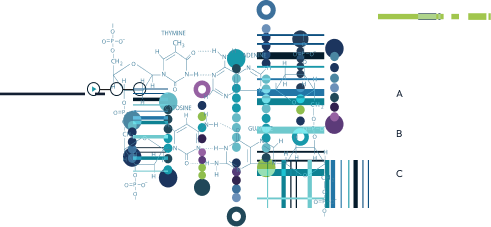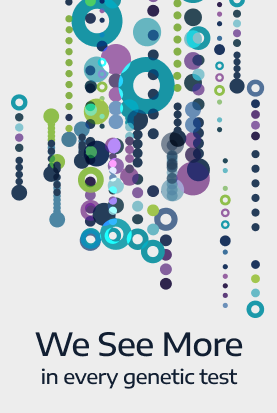News Center

Comprehensive hereditary cancer screening: Know the sequencing technology being used
- By Variantyx, Inc
- Posted in Clinical Education
Everyone has some risk of developing cancer. Most often cancer is caused by mutations that arise as a consequence of DNA damage due to factors such as smoking or exposure to UV light, or as the result of aging. However, in approximately 5-10% of cases, cancer is the result of hereditary mutations. These mutations, inherited from either or both parents, do not indicate that an individual will certainly develop cancer, but do indicate that the individual has an increased risk of developing cancer.
For someone with a family history of cancer, hereditary cancer screening can help identify if they themselves are at an increased risk. A positive test result could lead an individual and their physician to consider increasing surveillance methods to identify any instances of cancer as early as possible when it is most likely to be successfully treated. Alternatively it may be appropriate to consider chemoprevention medicines to help prevent cancer from developing, explore qualifying criteria for participation in cancer prevention clinical trials or research studies or look at reducing risk of occurrence through surgery.
When considering hereditary cancer testing, it’s important to know what mutations are covered and therefore how comprehensive the test is. This is determined in large part by the sequencing technology used. Some tests use SNP arrays to screen for specific nucleotide changes that are known to be pathogenic. These types of tests provide the least comprehensive mutation coverage. Other tests use targeted, NGS panel-based assays to screen sets of genes known to be associated with hereditary cancer when mutated. These tests provide more comprehensive mutation coverage, but have their own limitations.
When available hereditary cancer screening tests are reviewed, we find an intersection of 28 well-studied cancer predisposition genes that are covered by most if not all of the tests. Of these genes, 24 have previously described, cancer-associated del/dup mutations that are two exons or less in size1 (see the table below). This is significant for two reasons. The first is that SNP arrays can’t detect del/dups of any size. They are therefore limited to detecting and reporting small sequence changes such as single nucleotide variants (SNVs) and small indels. The second is that panel-based tests are capable of detecting some del/dups, but they can’t reliably detect del/dups less than two exons in size. They offer better coverage than SNP arrays, but still fall short of comprehensive coverage of known mutations.
| APC | CDH1 | MSH2 | POLE |
| ATM | CDK4 | MSH6 | PTEN |
| BARD1 | CDKN2A | MUTYH | RAD51C |
| BMPR1A | CHEK2 | NBN | RAD51D |
| BRCA1 | EPCAM | PALB2 | SMAD4 |
| BRCA2 | GREM1 | PMS2 | STK11 |
| BRIP1 | MLH1 | POLD1 | TP53 |
| APC | CDH1 |
| ATM | CDK4 |
| BARD1 | CDKN2A |
| BMPR1A | CHEK2 |
| BRCA1 | EPCAM |
| BRCA2 | GREM1 |
| BRIP1 | MLH1 |
| MSH2 | POLE |
| MSH6 | PTEN |
| MUTYH | RAD51C |
| NBN | RAD51D |
| PALB2 | SMAD4 |
| PMS2 | STK11 |
| POLD1 | TP53 |
The pattern similarly holds true when a more expanded set of cancer predisposition genes covered by a subset of available hereditary cancer screening tests is reviewed. Many of the additional genes have previously described, cancer-associated del/dup mutations that fall outside of the detection range of the tests. Examples of such genes include BAP1, NF1, NF2, RB1, SDHB, SDHC, SDHD and more.
In contrast to SNP array and panel-based assays, tests based on whole genome sequencing (WGS), when paired with appropriate algorithms, offer the most comprehensive coverage possible. Although no test can prove that an individual has no inherited susceptibility to cancer, the ability of WGS assays to detect and report small sequence changes plus del/dups of all sizes provides greater confidence when a result is negative.
For more information about how del/dups of all sizes can be detected by WGS, see our previous post here.
References
-
HGMD Professional, version 2018.2, Qiagen
